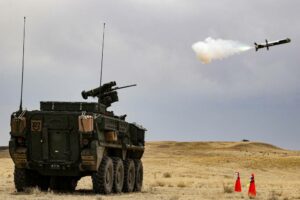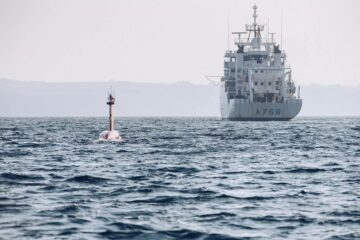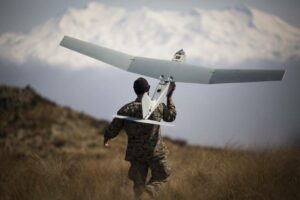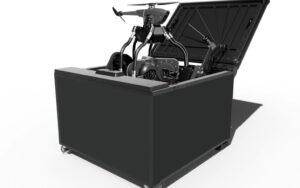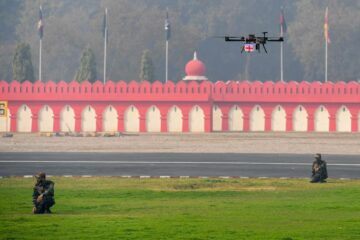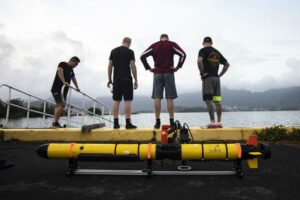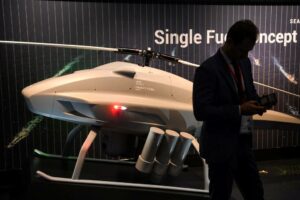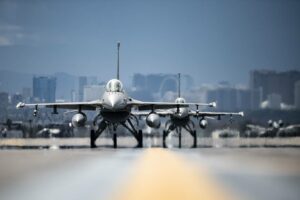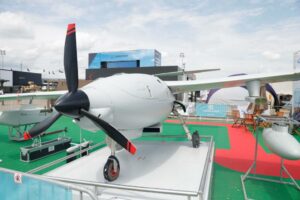WASHINGTON — The Pentagon’s counter-drone office is making headway on pushing new capabilities as the military services and combatant commands adopt the technology, its director said.
Several technologies that will help the U.S. military combat the rising drone threat are no longer just under evaluation in demonstrations in western test ranges but are now being procured by the services and used by units in every combatant command, Maj. Gen. Sean Gainey, the Joint Counter-small Unmanned Aircraft Systems Office director, told a Center for Strategic and International Studies event on Nov. 14.
The Joint Counter-small Unmanned Aircraft Systems Office, or JCO, established in 2019 to coordinate counter-UAS development, doctrine, organization, and training across the force, has held five demonstrations aimed at looking at various capabilities to tackle the complex and varying drone threats observed on the battlefield from cheap, hand-held devices to low-collateral interceptors to high-powered microwave capabilities.
RELATED
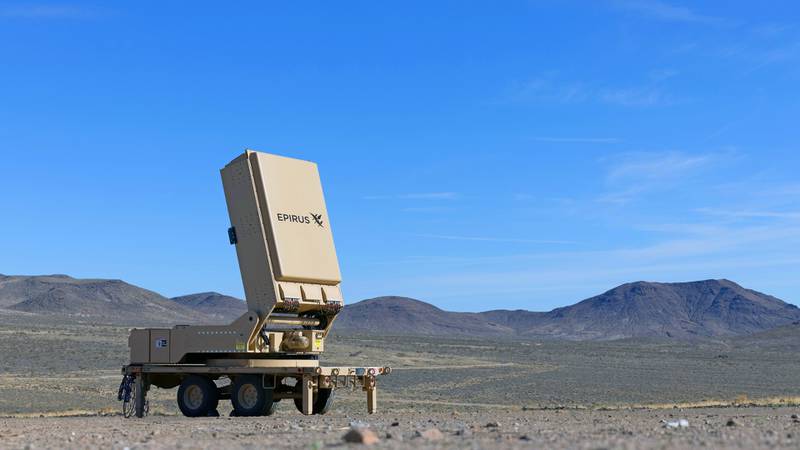
The first demonstration held in April 2021 at Yuma Proving Ground in Arizona was focused on low-collateral interceptors.
The demonstration made it possible for the JCO to identify readily available capability. The office narrowed down the pool of low-collateral interceptors to five vendors and passed that group to the Air Force along with funding to continue evaluation and demonstration from those vendors, Gainey explained.
The plan now is to conduct a final fly-off in the February or March timeframe, Gainey said. Following the fly-off, each service will be able to choose from a list of recommended vendors for capabilities that fit service-specific requirements.
At the same time, once a capability identified in demonstrations has reached a required safety threshold for soldier use, the JCO sends the systems into combatant commands. “Every service has a low-collateral capability inside every COCOM right now testing now and providing that feedback to the Air Force,” Gainey said.
The strategy allows the services to get capability out in the field rather than waiting until everything is fully baked and feedback is used to aid development of technology that continues to address evolving threats, he explained.
The JCO has used a similar method to transition laser weapons designed to defeat small drones from development into procurement, Gainey said. The office is funding the Air Force and Army to take directed energy weapons from 10-kilowatts, 20-kilowatts and eventually 50-kilowatts into theater to operationally assess the various systems and make recommendations.
Capability will then transition to the services to each buy systems at scale with their own procurement funding, according to Gainey.
While the JCO has a process to move technologies identified through demonstration out of development and into fielded systems, a CSIS report released Nov. 14 recommended Congress and Defense Department leadership should “consider modifications to JCO’s authorities and relation to service acquisition agencies to improve the requirements process and acquisition timelines.”
While the JCO has worked for several years to identify, demonstrate and refine capability across the counter-drone industry, the services “will play a larger role” in institutionalizing counter-UAS capability across the force, the report states.
“Questions remain as to whether they will accept systems supported by the JCO or develop their own unique platforms more suited for their specific needs, as well as how such needs will be prioritized against other service needs,” the report states.
The JCO could be empowered, the report suggests, “with an authority requirement recognized by the Joint Capabilities Integration Development Systems (JCIDS) that is broad enough to be effective for immediate C-sUAS needs.”
With that authority, the office should still coordinate closely with service leadership “to satisfy unique service requirements and avoid overlapping too much with other requirement generation bodies,” the report recommends.
Jen Judson is an award-winning journalist covering land warfare for Defense News. She has also worked for Politico and Inside Defense. She holds a Master of Science degree in journalism from Boston University and a Bachelor of Arts degree from Kenyon College.
- SEO Powered Content & PR Distribution. Get Amplified Today.
- PlatoData.Network Vertical Generative Ai. Empower Yourself. Access Here.
- PlatoAiStream. Web3 Intelligence. Knowledge Amplified. Access Here.
- PlatoESG. Carbon, CleanTech, Energy, Environment, Solar, Waste Management. Access Here.
- PlatoHealth. Biotech and Clinical Trials Intelligence. Access Here.
- Source: https://www.defensenews.com/unmanned/2023/11/15/pentagon-counter-drone-office-makes-headway-as-services-adopt-new-tech/
- :has
- :is
- 1
- 14
- 2019
- 70
- 8
- a
- Able
- Accept
- According
- acquisition
- across
- address
- adopt
- against
- agencies
- Aid
- aimed
- AIR
- Air Force
- aircraft
- allows
- along
- also
- an
- and
- April
- ARE
- arizona
- Army
- Arts
- AS
- assess
- At
- Authorities
- authority
- available
- avoid
- award-winning
- Battlefield
- BE
- being
- boston
- Boston University
- broad
- but
- buy
- by
- capabilities
- capability
- Center
- cheap
- Choose
- closely
- College
- combat
- complex
- Conduct
- Congress
- continue
- continues
- coordinate
- could
- covering
- Defense
- Defense Department
- Degree
- demonstrate
- Department
- designed
- develop
- Development
- Devices
- directed
- Director
- down
- drone
- Drones
- each
- Effective
- empowered
- energy
- enough
- established
- Ether (ETH)
- evaluation
- Event
- Every
- everything
- evolving
- explained
- false
- February
- feedback
- field
- final
- fit
- five
- focused
- following
- For
- Force
- from
- fully
- funding
- Gen
- generation
- get
- Ground
- Group
- he
- Held
- help
- holds
- How
- http
- HTTPS
- identified
- identify
- image
- images
- immediate
- improve
- in
- industry
- inside
- integration
- International
- into
- IT
- ITS
- joint
- journalism
- journalist
- jpg
- just
- Land
- larger
- laser
- Leadership
- List
- longer
- looking
- made
- make
- MAKES
- Making
- March
- master
- method
- Military
- Modifications
- more
- move
- much
- needs
- New
- New Tech
- news
- no
- nov
- now
- observed
- of
- Office
- on
- once
- or
- organization
- Other
- out
- own
- passed
- pentagon
- plan
- Platforms
- plato
- Plato Data Intelligence
- PlatoData
- Play
- pool
- possible
- prioritized
- process
- procurement
- providing
- proving
- Pushing
- rather
- reached
- readily
- recognized
- recommendations
- recommended
- recommends
- refine
- relation
- released
- remain
- report
- required
- requirement
- Requirements
- right
- s
- Safety
- Said
- same
- Scale
- Science
- Screen
- Sean
- sends
- service
- Services
- several
- she
- should
- similar
- small
- specific
- States
- Still
- Strategic
- Strategy
- studies
- such
- Suggests
- Supported
- system
- Systems
- tackle
- Take
- tech
- Technologies
- Technology
- test
- Testing
- than
- that
- The
- the joint
- Theater
- their
- then
- they
- those
- threat
- threats
- threshold
- Through
- time
- timeframe
- timelines
- to
- told
- too
- Training
- transition
- u.s.
- unique
- units
- university
- until
- use
- used
- various
- varying
- vendors
- Waiting
- was
- Weapons
- WELL
- Western
- whether
- will
- with
- worked
- years
- zephyrnet


